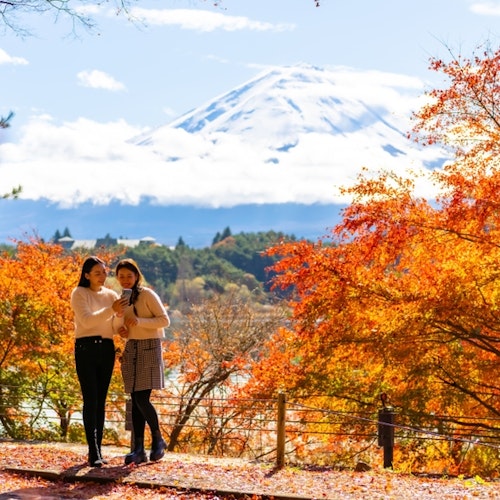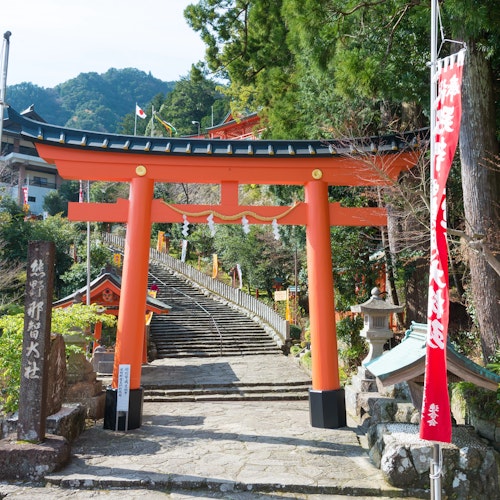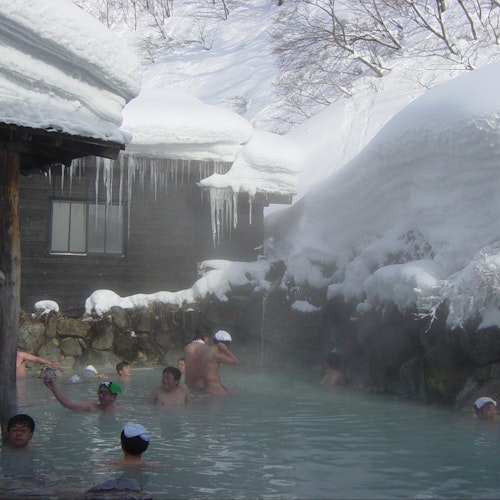
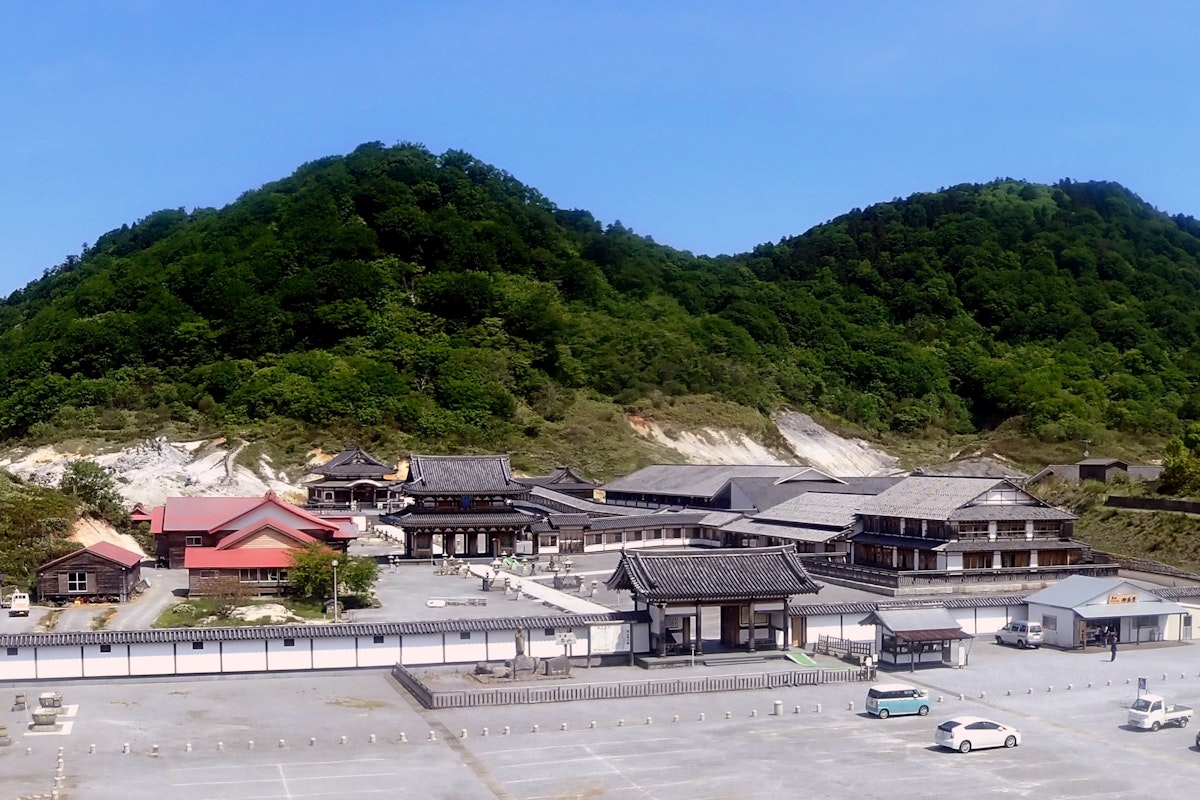
If you are looking for a place in Japan that feels like another world, Osorezan is it. Known as the “Mountain of Fear” and often called the gateway to the afterlife, this sacred mountain on the Shimokita Peninsula in Aomori Prefecture is unlike anywhere else in the country. The mix of volcanic landscapes, sulfuric hot springs, Buddhist temples, and local legends makes it one of Japan’s most mysterious spots.
The first thing you notice about Osorezan is how different it feels from other famous spots in Japan. While Kyoto charms you with temples surrounded by gardens and Tokyo dazzles you with neon streets, Osorezan greets you with an almost otherworldly silence.
This mountain has been known for centuries as one of Japan’s three most sacred sites, along with Mount Koya and Mount Hiei. It is believed to be a gateway to the afterlife according to local traditions and Buddhist beliefs. The area is home to Bodai-ji Temple, which was founded over a thousand years ago by the monk Ennin. The temple stands on the shore of Lake Usori, a lake so perfectly still that it mirrors the surrounding mountains like glass.
Walking here feels like stepping into a different realm. The volcanic soil gives the ground strange colors, from pale white to bright yellow. Streams bubble with hot water, and the air carries the smell of sulfur from the underground springs. Despite this raw landscape, there is a calmness that wraps around you as you wander.
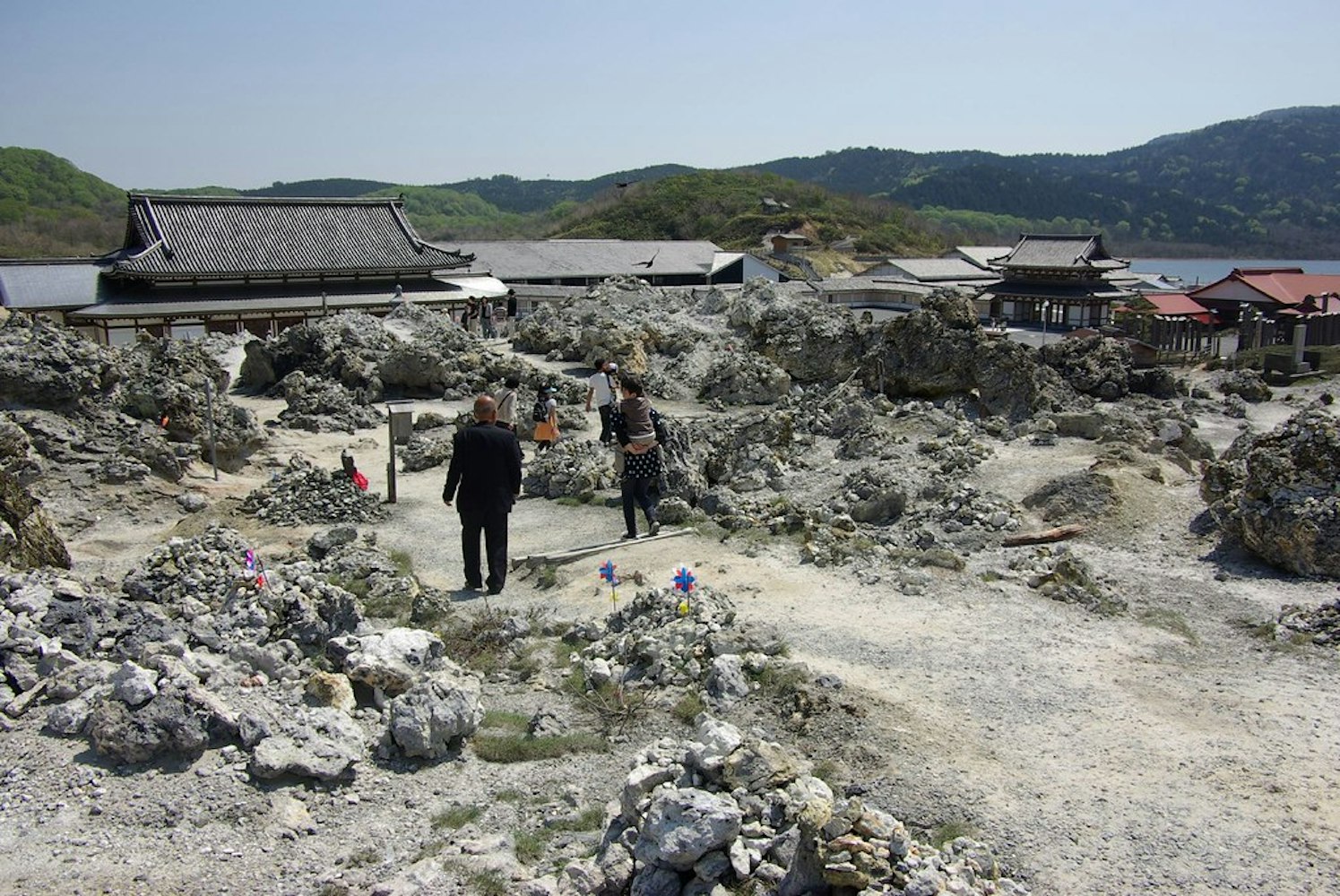
Osorezan is located on the Shimokita Peninsula in the far north of Aomori Prefecture. Most travelers first reach the city of Mutsu, which is the closest town to the mountain. You can take a train to Aomori City and then transfer to the JR Ominato Line toward Mutsu. From there, a bus runs directly to Osorezan during the warmer months.
The bus ride is scenic and takes you through forested hills before climbing toward the mountain. You will pass small villages and lakes before arriving at the temple entrance. The bus service usually operates from late April to early November because in winter, the road can be covered in heavy snow and the area becomes difficult to reach.
If you prefer a slower and more personal journey, renting a car gives you the freedom to stop at viewpoints along the way. Just be prepared for winding mountain roads and the occasional sudden change in weather.
The name Osorezan means Mountain of Fear in Japanese, and the reason behind it is tied to old beliefs about the afterlife. According to Buddhist traditions in this region, Osorezan represents the boundary between the world of the living and the world of the dead.
The monk Ennin, who founded Bodai-ji Temple in the year 862, is said to have been guided by a dream to this site. He believed the location was similar to descriptions of the Buddhist vision of paradise and hell. The combination of the serene Lake Usori and the harsh volcanic landscape symbolized both the peace of heaven and the suffering of hell.
For centuries, people from across Japan have made pilgrimages here to pray for ancestors, to seek guidance from spiritual mediums called itako, and to feel closer to loved ones who have passed away.
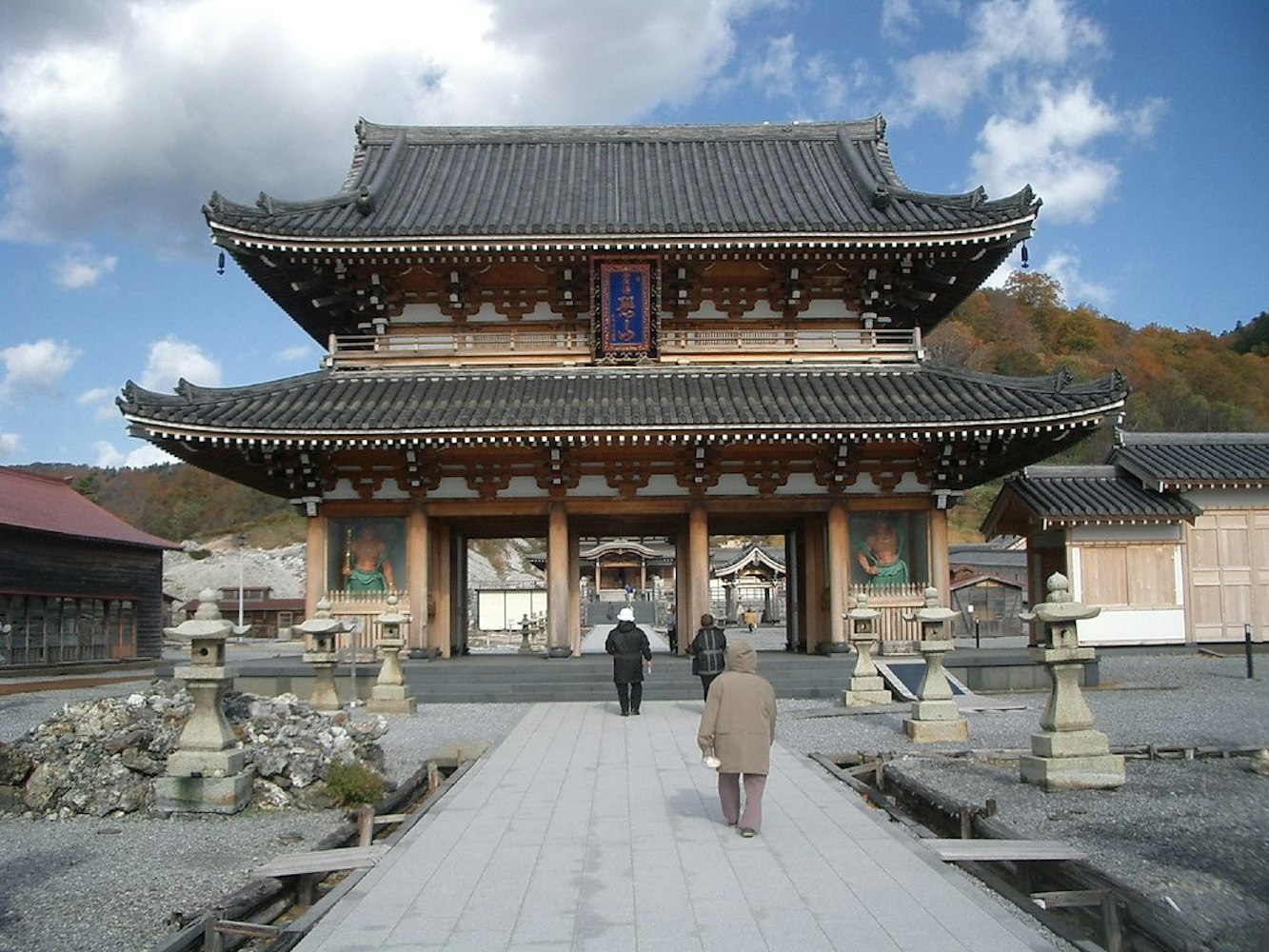
Bodai-ji Temple is the heart of Osorezan. Its wooden gates open to a path that leads you along the shores of Lake Usori. The lake’s water is a surreal blue-green and surrounded by white sandy shores that look almost like a tropical beach, though the air is cool and the scent of sulfur is ever present.
Beyond the lake, paths wind through the volcanic landscape. You will see bubbling pools, steaming vents, and rock formations that have been shaped by centuries of geothermal activity. Small piles of stones are scattered along the paths, built by visitors as offerings or prayers.
One of the most moving sights is the row of windmills placed by grieving parents in memory of children who have passed away. The colorful pinwheels spin gently in the breeze, creating a soft clicking sound that mixes with the quiet rustle of the wind.
Osorezan is open to visitors from late April to early November. The area is closed during winter because of heavy snow. Each season brings a different mood to the mountain.
Spring offers fresh greenery and cooler temperatures, while summer brings festivals and more visitors. The Itako Taisai festival in July is the most famous event, when spiritual mediums gather at the temple to perform ceremonies for the public. Autumn might be the most beautiful time to visit, with the surrounding mountains covered in fiery red and orange leaves that contrast sharply with the white sand and blue lake.
If you want a quieter experience, visiting on a weekday in spring or autumn will give you the peaceful atmosphere without large crowds.
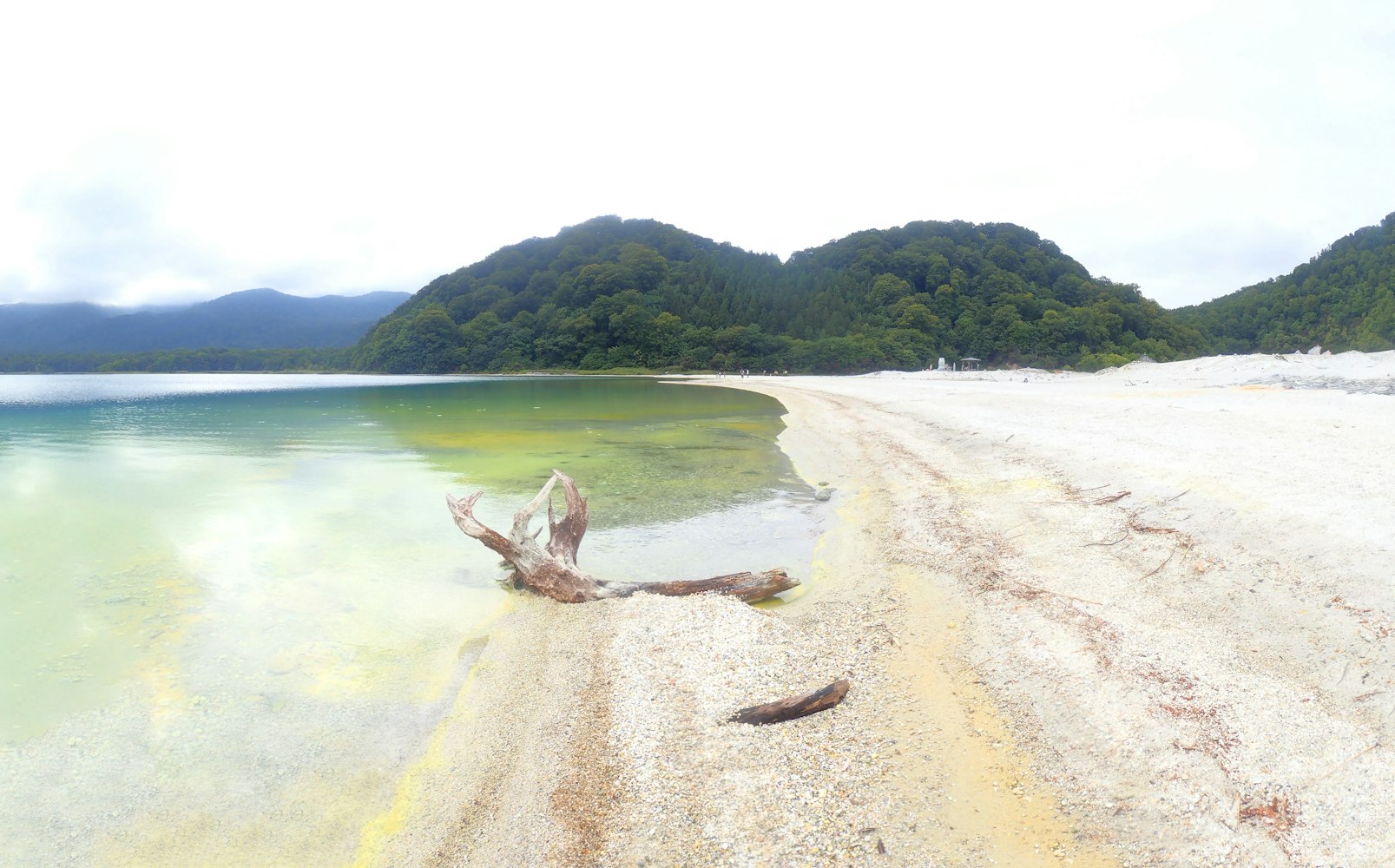
Since Osorezan is a sacred site, it is important to show respect during your visit. Dress modestly, keep your voice down, and be mindful when taking photos. Many visitors choose to bow slightly when passing statues or temple gates as a sign of respect.
The volcanic nature of the area means you should also be careful on paths, especially after rain, as the ground can be slippery. Some areas have strong sulfur smells, so if you have breathing issues it is wise to bring a mask or take breaks in fresher air.
While there are small shops near the entrance, it is best to bring some water and snacks if you plan to spend several hours exploring. There is also a hot spring bath available at the temple where you can soak and relax after walking.
Yes, you can actually stay overnight at the temple lodging, which offers a simple and peaceful experience. Rooms are traditional Japanese style with tatami mats and futon bedding. Meals are vegetarian Buddhist cuisine, known as shojin ryori, which is healthy and beautifully prepared.
Staying overnight allows you to enjoy the mountain after day visitors have left. Early mornings are especially magical when mist rises from the lake and the temple bells echo through the quiet air.
Lake Usori is one of the main reasons Osorezan feels so magical. The lake is formed in a volcanic crater and its water is rich in minerals, giving it a striking blue-green color. The sandy shore is pure white from volcanic deposits, and the combination looks almost unreal.
Legend says that the lake represents the Sanzu River, which in Buddhist belief is the river souls must cross after death. The bridge at Bodai-ji Temple is said to symbolize this crossing, and some visitors toss coins into the water as offerings.
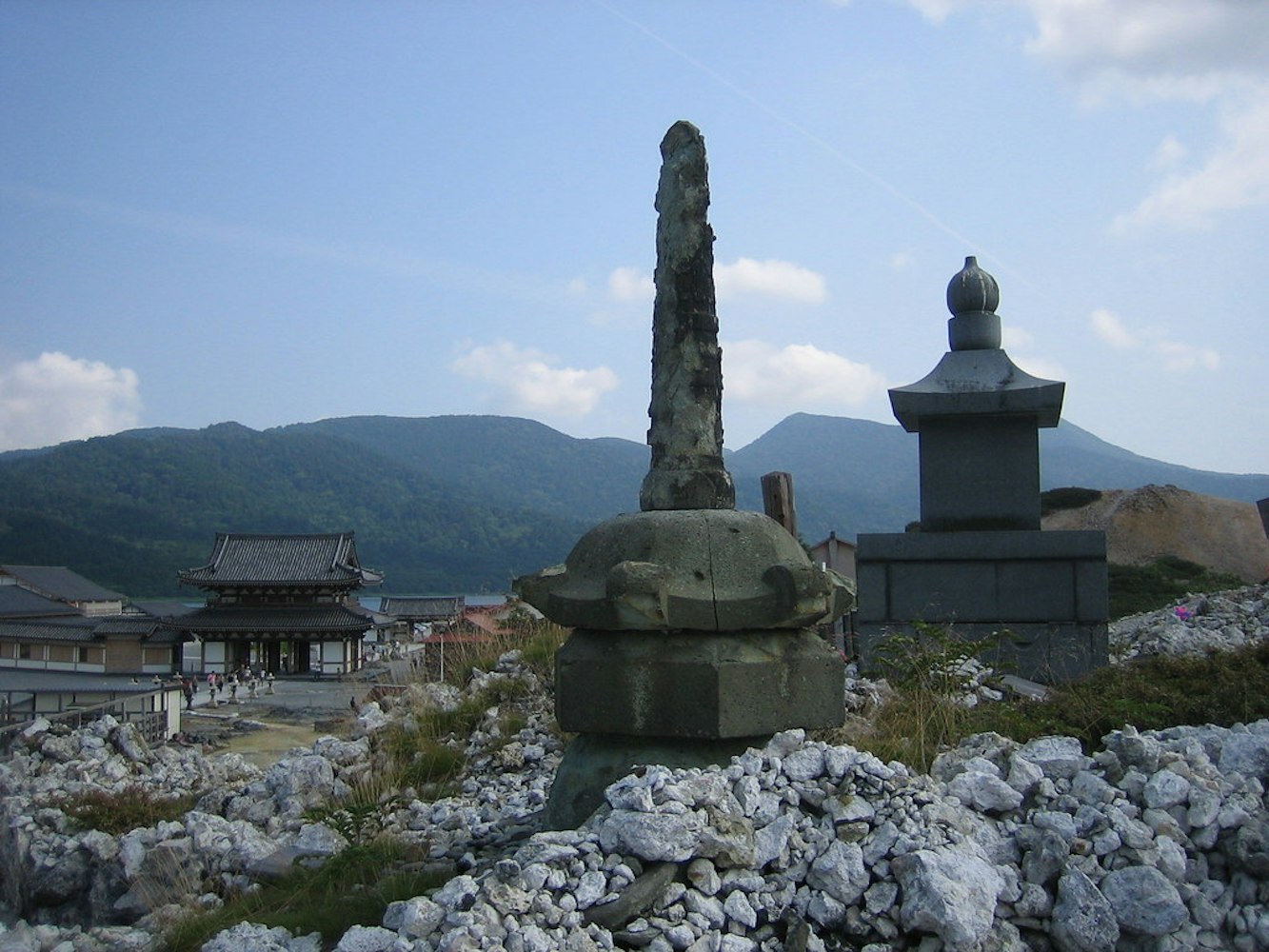
The Itako are blind women who train for years to serve as mediums between the living and the dead. Their tradition is unique to the Tohoku region, and Osorezan is one of the few places where you can still witness their rituals.
During the summer festival, Itako sit in small booths around the temple grounds. People line up to ask them to call forth the spirits of loved ones and deliver messages. Whether you believe in their powers or not, watching the ceremony is fascinating because it is such a rare and deeply rooted cultural tradition.
Osorezan offers countless opportunities for photography. The mix of natural beauty and spiritual atmosphere means every corner has a story to tell. Early morning and late afternoon offer the best light for capturing the colors of the lake and the texture of the volcanic ground.
Instead of rushing to take many pictures, try to slow down and notice the small details. A single windmill spinning in the breeze or a lone Jizo statue under the shade of a pine tree can be more powerful than a wide shot of the whole lake.
Osorezan is not just a tourist attraction. It is a living spiritual site that has drawn pilgrims for over a thousand years. Visiting here is a journey both in distance and in spirit. You will walk through landscapes that look like no other in Japan, meet traditions that have survived against the odds, and feel the quiet pull of a place where heaven and earth seem to meet.
Whether you come for the history, the scenery, or the spiritual energy, Osorezan will leave a lasting impression. It is the kind of place that stays in your mind long after you have left, a reminder that some corners of the world hold mysteries we may never fully understand.

Discover Japan without limits with our all-access JR Pass!
